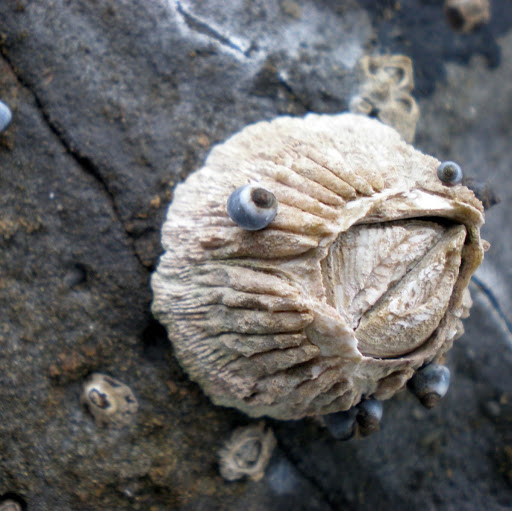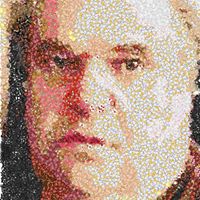Alexander N Morrow
age ~31
from Westerville, OH
- Also known as:
-
- Alexander R Morrow
- Morrow Alexander
- Phone and address:
- 194 Burns Dr, Westerville, OH 43081
Alexander Morrow Phones & Addresses
- 194 Burns Dr, Westerville, OH 43081
Isbn (Books And Publications)

Us Patents
-
Neural Sleeve For Neuromuscular Stimulation, Sensing And Recording
view source -
US Patent:20230020138, Jan 19, 2023
-
Filed:Sep 15, 2022
-
Appl. No.:17/945486
-
Inventors:- Columbus OH, US
Gaurav Sharma - Columbus OH, US
Andrew Sweeney - Columbus OH, US
Amy M. Heintz - Dublin OH, US
Stephanie Kute - Columbus OH, US
Nicholas Annetta - Columbus OH, US
Thomas D. Haubert - Columbus OH, US
Steven M. Risser - Reynoldsburg OH, US
Jeffrey Friend - Columbus OH, US
John Bartholomew - Columbus OH, US
Rachel Thurston - Columbus OH, US
Alexander C. Morrow - Gahanna OH, US
George Brand - Columbus OH, US
Jeffrey Ellis - Columbus OH, US
Matthew Mowrer - Columbus OH, US
Raymond Zaborski - Columbus OH, US -
International Classification:A61N 1/05
A61N 1/04
A61B 5/00
A61B 5/11
A61B 5/291
A61B 5/375
A61B 5/389 -
Abstract:The present disclosure relates to neuromuscular stimulation and sensing cuffs. The neuromuscular stimulation cuff has at least two fingers and a plurality of electrodes disposed on each finger. More generally, the neuromuscular stimulation cuff includes an outer, reusable component and an inner, disposable component. One or more electrodes are housed within the reusable component. The neuromuscular stimulation cuff may be produced by providing an insulating substrate layer, forming a conductive circuit on the substrate layer to form a conductive circuit layer, adhering a cover layer onto the conductive circuit layer to form a flexible circuit, and cutting at least one flexible finger from the flexible circuit. The neuromuscular stimulation cuff employs a flexible multi-electrode design which allows for reanimation of complex muscle movements in a patient, including individual finger movement.
-
Neural Sleeve For Neuromuscular Stimulation, Sensing And Recording
view source -
US Patent:20180154133, Jun 7, 2018
-
Filed:Jan 16, 2018
-
Appl. No.:15/872734
-
Inventors:- Columbus OH, US
Jeffrey Friend - Columbus OH, US
Gaurav Sharma - Lewis Center OH, US
Andrew Sweeney - Columbus OH, US
Amy M. Heinz - Dublin OH, US
Stephanie Kute - Columbus OH, US
Nicholas Annetta - Columbus OH, US
Thomas D. Haubert - Columbus OH, US
Steven M. Risser - Reynoldsburg OH, US
Alexander Morrow - Gahanna OH, US
Raymond Richard Zaborski - Westerville OH, US
George Naegele Brand - Dublin OH, US
Matthew Edward Mowrer - Saint Clairsville OH, US -
International Classification:A61N 1/04
G06F 3/01
A61N 1/36 -
Abstract:The present disclosure relates to neuromuscular stimulation and sensing cuffs. The neuromuscular stimulation cuff has at least two fingers and a plurality of electrodes disposed on each finger. More generally, the neuromuscular stimulation cuff includes an outer, reusable component and an inner, disposable component. One or more electrodes are housed within the reusable component. The neuromuscular stimulation cuff may be produced by providing an insulating substrate layer, forming a conductive circuit on the substrate layer to form a conductive circuit layer, adhering a cover layer onto the conductive circuit layer to form a flexible circuit, and cutting at least one flexible finger from the flexible circuit. The neuromuscular stimulation cuff employs a flexible multi-electrode design which allows for reanimation of complex muscle movements in a patient, including individual finger movement.
-
Dual-Grip Portable Countermeasure Device Against Unmanned Systems
view source -
US Patent:20170250778, Aug 31, 2017
-
Filed:May 16, 2017
-
Appl. No.:15/596842
-
Inventors:- Columbus OH, US
Alexander Morrow - Gahanna OH, US -
International Classification:H04K 3/00
G08B 7/06
H01Q 21/22
G08B 6/00 -
Abstract:A portable countermeasure device is provided comprising one or more directional antennae, one or more disruption components and at least one activator. The portable countermeasure device further comprises a body having a dual-grip configuration, with the directional antennae are affixed to a front portion of the body. The one or more disruption components may be internally mounted within the device body. The dual-grip configuration allows an operator to use his body to steady and support the device while maintaining the antenna on target. The second grip is positioned adjacent the first grip, with the first grip angled toward the rear of the device and the second grip angled toward the front of the device. The portable countermeasure device is aimed at a specific drone, the activator is engaged, and disruptive signals are directed toward the drone, disrupting the control, navigation, and other signals to and from the drone.
-
Methods For Tailoring The Refractive Index Of Lenses
view source -
US Patent:20160221283, Aug 4, 2016
-
Filed:Sep 10, 2014
-
Appl. No.:15/021652
-
Inventors:- Columbus OH, US
Erik Edwards - Gahanna OH, US
Amy M. Heintz - Dublin OH, US
John S. Laudo - Hilliard OH, US
Alexander C. Morrow - Gahanna OH, US
Steven M. Risser - Reynoldsburg OH, US -
International Classification:B29D 11/00
G02C 7/10
B29D 11/02
G02B 1/04 -
Abstract:Methods and devices for altering the power of a lens, such as an intraocular lens, are disclosed. In one method, the lens comprises a single polymer matrix containing crosslinkable pendant groups, wherein the polymer matrix increases in volume when crosslinked. The lens does not contain free monomer. Upon exposure to ultraviolet radiation, crosslinking causes the exposed portion of the lens to increase in volume, causing an increase in the refractive index. In another method, the lens comprises a polymer matrix containing photobleachable chromophores. Upon exposure to ultraviolet radiation, photobleaching causes a decrease in refractive index in the exposed portion without any change in lens thickness. These methods avoid the need to wait for diffusion to occur to change the lens shape and avoid the need for a second exposure to radiation to lock in the changes to the lens.
-
Methods For Tailoring The Refractive Index Of Lenses
view source -
US Patent:20160195735, Jul 7, 2016
-
Filed:Mar 11, 2016
-
Appl. No.:15/068396
-
Inventors:- Columbus OH, US
Erik Edwards - Gahanna OH, US
Amy M. Heintz - Dublin OH, US
John S. Laudo - Hilliard OH, US
Alexander C. Morrow - Gahanna OH, US
Steven M. Risser - Reynoldsburg OH, US -
International Classification:G02C 7/02
G02C 7/04
G02B 1/04 -
Abstract:Methods and devices for altering the power of a lens, such as an intraocular lens, are disclosed. In one method, the lens comprises a single polymer matrix containing crosslinkable pendant groups, wherein the polymer matrix increases in volume when crosslinked. The lens does not contain free monomer. Upon exposure to ultraviolet radiation, crosslinking causes the exposed portion of the lens to increase in volume, causing an increase in the refractive index. In another method, the lens comprises a polymer matrix containing photobleachable chromophores. Upon exposure to ultraviolet radiation, photobleaching causes a decrease in refractive index in the exposed portion without any change in lens thickness. These methods avoid the need to wait for diffusion to occur to change the lens shape and avoid the need for a second exposure to radiation to lock in the changes to the lens.
Resumes

Alexander Morrow
view source
Alexander Morrow
view source
Alexander Morrow
view sourceLocation:
United States
Youtube
Flickr
Googleplus

Alexander Morrow

Alexander Morrow

Alexander Morrow

Alexander Morrow

Alexander Morrow

Alexander Morrow

Alexander Morrow

Alexander Morrow
Education:
Brownwood High School
About:
I play video games such as MW3, Skyrim, Pokemon, etc.
Tagline:
I like pie!
Myspace

Alexander Morrow
view source
Alexander Morrow
view source
Alexander Morrow
view source
Neil Alexander Morrow
view source
Quinn Alexander Morrow
view source
Alexander Morrow
view source
Alexander Morrow
view source
Alex Morrow
view sourceClassmates

Stella Brockman Elementar...
view sourceGraduates:
Alexander Morrow (1993-1997),
Nicole Cash (1995-1999),
Brandon Kimball (2000-2001),
Andrew Debrito (1996-2000)
Nicole Cash (1995-1999),
Brandon Kimball (2000-2001),
Andrew Debrito (1996-2000)
Get Report for Alexander N Morrow from Westerville, OH, age ~31














